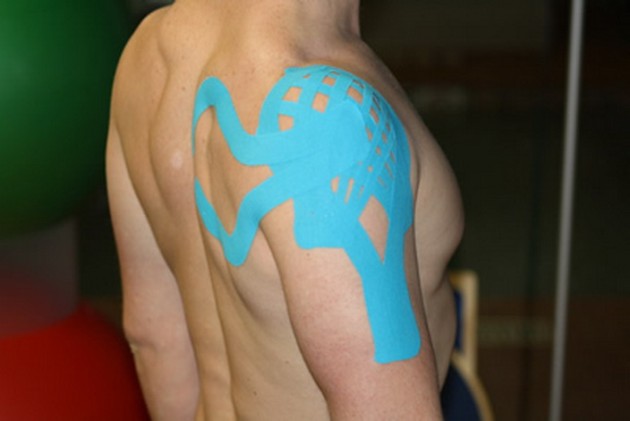
Kinesio Taping
So what is all the fuss about, and does this elastic tape really work?
Kinesio tape manufactures (Kinesio Tex, K-Tape, KT Tape, Spider Tape, Rock Tape and more) claim it can treat injuries literally from head to toe. Treatment philosophies range from “best when applied by a professional” to “anyone can do it.” So what’s the truth?
As a Physiotherapist with experience using the tape over a hundred times in a range of applications, here’s my answer: Yes. It works. And yes, the technique used and the skill of the person applying the tape matters. Ideally one would have an understanding of the particular injury, the factors contributing to it, and how to apply the tape with a specific physiological rationale that will improve pain-free movement.
I have worked with athletes who have tried several ways of kinesiotaping for the shoulder, with variable results. Some athletes have come to me saying they’ve tried it and it doesn’t work, only to try a different application and find that it makes a substantial difference.
The most dramatic examples I have seen are:
1) taping an elderly male who had two of four rotator cuff tendons surgically removed, leaving his shoulder permanently unstable and painful, with range of motion limited to about 50% of normal. Application of the tape allowed immediate, full range of motion because it corrected the joint position.
2) taping over 30 athletes in 3 days of U17/18 Volleyball Nationals held in Abbotsford May 13, 14 and 15, 2011. I would estimate a 95% success rate (notable improvement in pain-free range of motion) with the taping. In other words, almost all the athletes could either move further before onset of pain, or felt no pain at all.
In most cases taping is not addressing the cause of the problem. Don’t kid yourself. If you have a shoulder injury, taping may help you make it through a tournament or perform closer to 100%, but there is no substitute for effectively diagnosing and treating the root cause(s) of the problem, so that you can train harder, play harder and perform like a champion.
Read more news from our Physiotheraphy section.
Check out our Interviews section, every Tuesday a new story, tomorrow read about Orle – Young but united.